Easy to reach, and offering plenty of good-value property, it’s no surprise that colourful, sophisticated Liguria is much loved, says Fleur Kinson
Photos by Getty Images
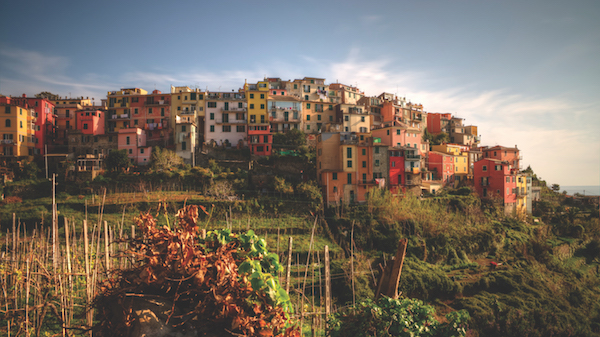
Forming a slender arc on the map, Liguria hugs the Mediterranean coast from the south of France to Tuscany. And yes, its beaches are every bit a lovely as such a location might suggest. Liguria’s coast is sometimes called the ‘Italian Riviera’, as it continues the line of celebrated beaches and resort-towns begun on the swanky French Côte d’Azur. Both coastlines share a similar cosmopolitan sophistication and a sensuous beauty, but the Italian section is arguably a little more laid-back and welcoming. Being Italy, the buildings are often a bit more beautiful, too. Liguria’s sea-plunging hillsides sprout plenty of lovely Art Nouveau villas while the towns and villages are a colourful maze of trompe l’oeil paintwork that tricks your eye into seeing pretty balustrades, balconies and shutters that aren’t really there.
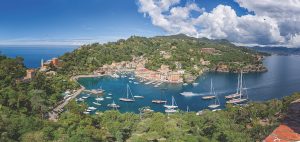
But a glorious coast is only part of Liguria’s geographical appeal. Behind the beaches rise the steep, wooded Maritime Alps (an offshoot of the mightier range further north) and the Ligurian Apennines. These mountains shelter the region from any cold air whooshing down from the high Alps lining the top of Italy, so coastal Liguria enjoys remarkably mild winters. At the same time, with a cooler elevation at its back and breezes coming in off the sea, the coast rarely gets too savagely hot in the summertime. No wonder, then, that Liguria’s
seaside held a great appeal for wealthy convalescents and health-seekers in the late 19th and early 20th centuries. The benign, temperate climate here definitely promotes a sense of well-being.
As well as moderating coastal temperatures, Liguria’s mountains provide an entirely different world to be accessed just a short distance from the region’s gilded beaches. Climb into the hinterland and you enter a tranquil wonderland of wooded slopes, where olive, pine and chestnut trees soak in the sun, wild boar and deer hide shyly in the shade, and fireflies fill summer nights with their winking lights. Up here, settlements are small and ancient, medieval villages appearing as a swirl of terracotta rooftops around a delicate campanile. The air is arrestingly fresh and carries the scent of trees and wild herbs. In these quiet heights, local people extract particularly superb olive oil and cook up a famously fragrant, delicate cuisine.
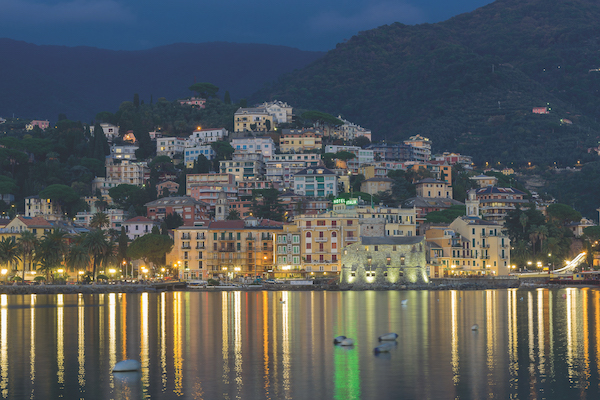
Market and prices
Liguria’s healthful climate began luring well-to-do convalescents to the region’s seaside in the late 19th century, and it’s fair to say that Liguria’s international property market first got going back then. European artists and intellectuals followed the convalescents, delighting in the ease, elegance and sensual appeal of coastal Liguria. And so this coast became a fashionable retreat for travellers, thinkers and anyone seeking to escape a cold or unbeautiful world, and it has never lost this reputation.
Popular for such a long time, Liguria’s coast is not among Italy’s cheapest places for property, but neither is it as prohibitively expensive as you might imagine. Certainly the Italian Riviera remains cheaper than the French Riviera. Meanwhile, Liguria’s steep, leafy hinterland has exerted a strong pull on foreign buyers in recent decades. Extremely low property prices first drew their attention, followed by the deep peace and beauty of the area. Good roads, and short distances down to the sea, mean that a home on high can deliver the best of both worlds. The bright, excitable coast and the tranquil highlands sit within easy reach of each other.
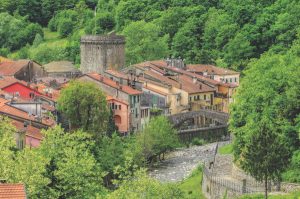
So what about actual numbers on price tags? What might you expect to pay for a home in Liguria these days? Proximity to the sea is a big factor, with coastal homes generally pricier than homes in the hinterland. That said, some coastal locales cost more than others, and we’ll be looking at that in a moment. But as a very rough guide, a large seaside villa with a pool might ask around €400,000, while a one-bedroom beach apartment might ask €150,000. Inland, you might get a very nice villa with land for €180,000, a beautifully renovated two-bedroomed village house for €65,000 or a more modestly restored one for only €40,000. Small village apartments needing work can be had for around €25,000.
There are plenty of old properties available as renovation projects in Liguria’s higher elevations, and these can come recommended as good value for money. Matteo Scandolera of the agency Liguria Homes says that “To buy and restore is a great choice. You will save money, and nowadays it is very easy to find architects and builders who speak English and so everything is made easier. Renovation works cost so much less than many of my overseas clients think.” The option of buying a plot of land and building from scratch has also appealed to some buyers in Liguria, and there are plenty of high-elevation positions here that afford fantastic views.
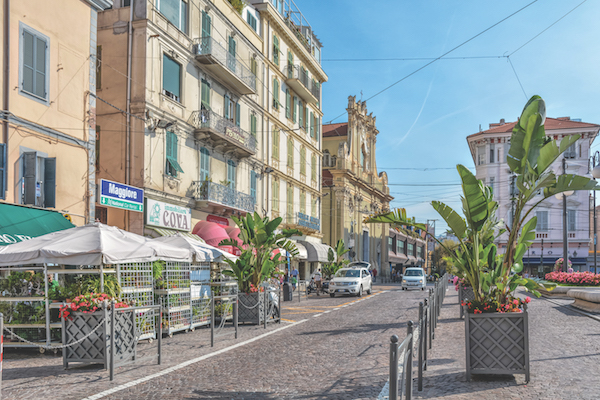
A coast of two halves
To better appreciate what Liguria offers in terms of atmosphere, geography and property costs, it’s useful to break the region into two chunks – the west and the east, with regional capital Genoa situated roughly in the middle. Not only do the beach areas of both halves have rather distinct characters from each other, but the inland areas behind both coasts differ slightly too. From the outset, you might want to focus your property search in either the west or the east.
Helpfully, Liguria’s ‘two coasts’ have different names. The western seaside is called the ‘Riviera di Ponente’ – the ‘coast where the sun goes down’ – and the eastern seaside is called the ‘Riviera di Levante’ – ‘the coast where… oh you can guess the rest’. The Ponente seaside generally has wider, sandier beaches than the Levante, and the weather is just a touch warmer.
It was to this western half that the earliest health-seeking visitors and convalescents came, and the area is full of venerable old resorts such as Bordighera, Alassio and San Remo (this older form of the name endures in the Anglophone world, while modern-day Italians now tend to write it ‘Sanremo’).
While the first two of these three resorts tend to be western Liguria’s priciest spots for property, Matteo Scandolera of Liguria Homes highlights San Remo as the place offering notable value for money on the western coast. Matteo also points out western Liguria’s ease of access for international travellers. “Nice airport is our main airport,” he says. “It’s less than an hour’s drive from western Liguria and has hundreds of flights to everywhere in the world.”
The eastern half of Liguria’s coast, from Genoa to the Tuscan border, is slightly more difficult to reach, which has rather added to its exclusive, swanky air. In recent decades, Liguria’s eastern seaside has been very fashionable with the yachting set.
Beaches in this half tend to be small and intimate, often semi-pebbly instead of wholly sandy. Behind them, the land rises more suddenly and dramatically than it does in the west, creating particularly arresting backdrops to the sea. Visitor hotspots include Rapallo, Portofino and the cliff-bound villages of Cinque Terre. Property prices on Liguria’s eastern seaside can be very high, but not everywhere. Opting for lesser-known resorts, or inching inland, will yield more affordable property.
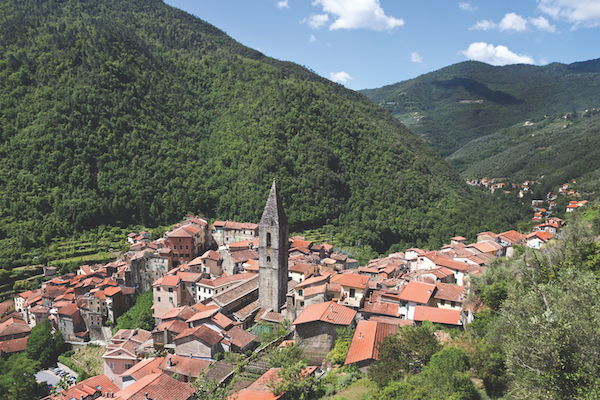
Onwards and upwards
As we have already suggested, buyers hoping to make major savings should investigate Liguria’s hinterland. Essentially, the further from the sea you are, the lower-priced the property. But affordability isn’t the only appeal of inland Liguria. The hills and mountainsides here offer a fragrant, fresh-aired tranquillity that can provide a perfect counterpoint to the bright exhilaration of the coast.
Immersed in leafy nature, you won’t be removed from civilisation. There are plenty of cute villages and small towns scattered about, with pretty buildings and great restaurants. Wonderful walking trails snake through Liguria’s higher elevations, and several clear mountain streams have been dammed to create public swimming pools. As you might expect, there are plenty of great views from on high. Note that if you go too high up into Liguria’s mountains, you begin to lose the region’s famously temperate micro-climate.
The hinterlands of western and of eastern Liguria share a similar character, but the western half rises a little more slowly and gently from the seaside than does the east, where it can be rather more sudden and steep. This means that there is a bit more mid-elevation space in the western half – gentler hilly areas – where you can benefit from the lower prices that come from being a little way from the sea while still enjoying the benign coastal micro-climate that steadily weakens the higher up you go.
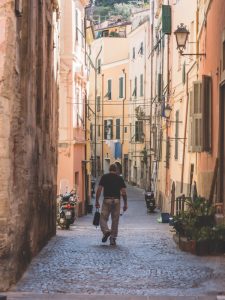
There are several areas of the western hinterland that come recommended for property-buyers. Have a look at the Nervia Valley behind Bordighera – particularly in lesser-known villages like Rochetta Nervina and Pigna. Or go inland from Imperia and Diano Marina, where there’s also very good value for money to be had. The Argentina, Armea and Carpasina valleys should not escape your attention, nor should villages like Borgomaro, Vasia and Taggia, with its superb Taggiasca olive variety. In the hinterland of eastern Liguria, the area inland of Chiavari is a good place to investigate for property.
As you might guess, Liguria offers excellent summer holiday rental prospects all along its perennially popular seaside. Note that two-bedroom apartments tend to be the most requested property type on the coast. But visitors to Liguria don’t only come for the region’s beaches. Many also come to explore the glorious walking trails up in the hills and mountains, to admire high-elevation vistas and breathe clean woodland air. You can expect a reasonable level of interest in a rental property up in Liguria’s wooded heights, particularly if you choose your location carefully and market your property well. (Note that German and Scandinavian visitors are particularly drawn to nature-loving walking trips, so be sure to target these nationalities too.) A general tip for buyers in the hinterland who want to maximise holiday rentability is to choose a property no more than a dozen miles from the sea.
Useful contacts
Casa Antica
Italia Casa
Liguria Homes
For more on Liguria’s property potential, see our regional guide
Liguria property picks
[slideshow_deploy id=’22866′]
